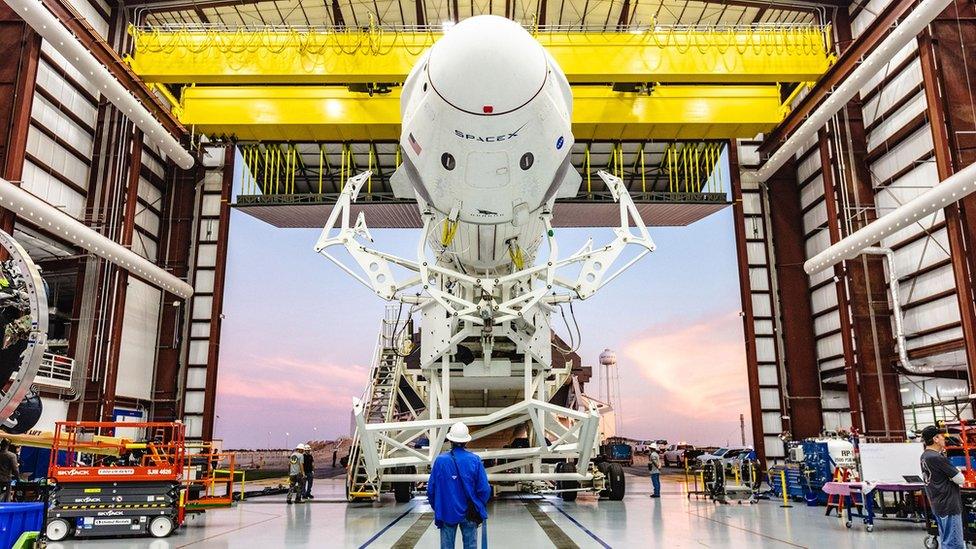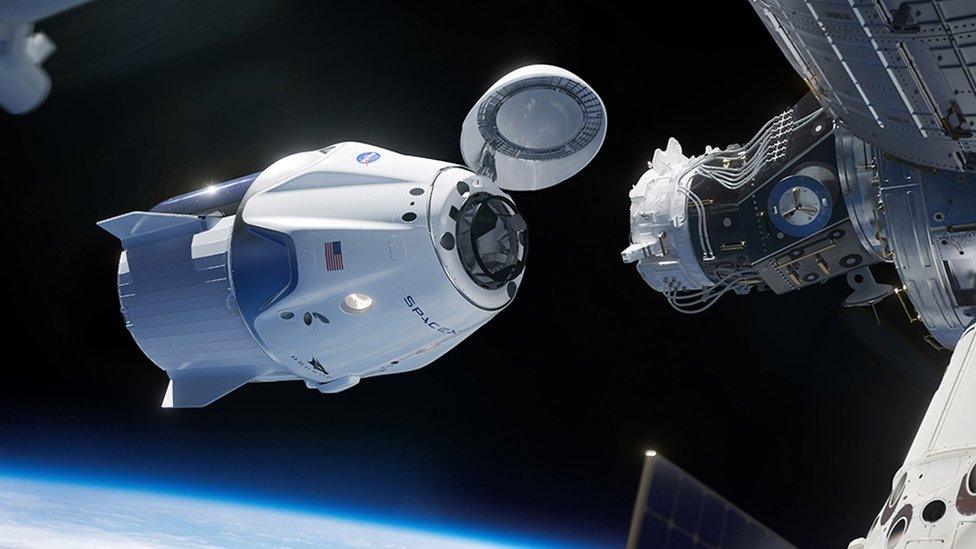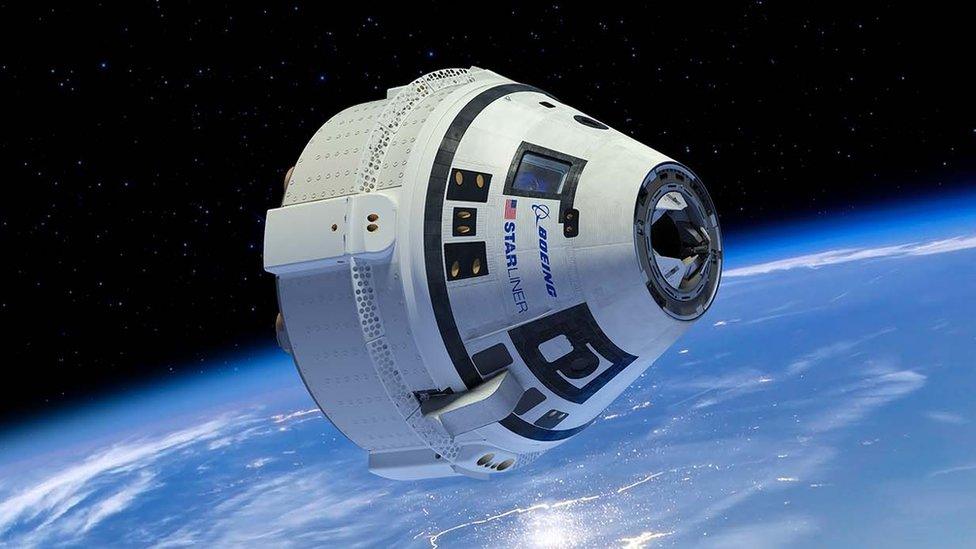Leaky component led to SpaceX explosion
- Published

The Crew Dragon is designed to ferry astronauts to the International Space Station (ISS)
A leaky component may have been to blame for the dramatic explosion of a SpaceX capsule during testing in April.
No one was hurt in the ground test at Cape Canaveral in Florida, but the failure was a setback in the company's efforts to send astronauts to the International Space Station.
Currently, the US buys seats for its astronauts on the Russian Soyuz rocket.
Nasa is planning to hand over the transport of astronauts to and from the ISS to Elon Musk's SpaceX and Boeing.
It's doing this under something called the Commercial Crew Programme.
The preliminary findings of the SpaceX analysis suggest that the leaking component allowed a small amount of nitrogen tetroxide (NTO), which is used as a liquid oxidiser in spacecraft engines, to enter high pressure tubes meant for helium.
On 20 April at Cape Canaveral Air Force Station, engineers were conducting something called a static fire engine test, where the spacecraft is secured to the ground and its engines are fired at full thrust. SpaceX was checking the vehicle's propulsion systems prior to a planned test of the in-flight emergency abort system.

Artist's concept of Crew Dragon docking with the ISS
A small amount of NTO was driven at high speed through a helium check valve (one that allows gas to flow in just one direction). The check valve was made of titanium. This happened during initialisation of the launch escape system - which is designed to blast the crew free in the event of a rocket failure.
In a statement, the company said: "The failure of the titanium component in a high-pressure NTO environment was sufficient to cause ignition of the check valve and led to an explosion."
It added: "The reaction between titanium and NTO at high pressure was not expected."
As a result of the explosion, SpaceX has already taken several actions, including the use of components called burst disks instead of check valves. The burst disks seal completely until opened by high pressure. The company believes this will prevent any liquid propellant entering the gaseous pressurisation system.
In an interview with the C-SPAN television network on 12 July,, external Nasa administrator Jim Bridenstine, said: "This was a test. This is why we test. Ultimately, we find out what went wrong, we make adjustments and we move forward. That's what Nasa has always done, that's what we expect our commercial crew partners to do. They are doing it."

The Nasa astronauts who will fly on the first test flights and missions of the Starliner (background, left) and the Crew Dragon (background right)

An artist's impression of Boeing's CST-100 Starliner
SpaceX has been criticised for a perceived lack of openness in the wake of the explosion. Jim Bridenstine said there was now a new procedure in place in the event that something similar happens again.
"Within a couple of hours, we're going to do a press conference and get as much information out to the public as soon as possible," he explained.
The company has had to rearrange its spacecraft assignments as a result of the test failure, in order to stay on track for its Commercial Crew Programme flights. The Crew Dragon originally assigned to SpaceX's demonstration mission to the ISS (known as Demo-2) will carry out the company's in-flight abort test.
The spacecraft originally assigned to the first operational mission (known as Crew-1) will launch on Demo-2.
Demo-2 will ferry Nasa astronauts Doug Hurley and Bob Behnken to the ISS for the first crewed test flight of the vehicle. It would mark the first time US astronauts have launched to space from American soil since the last flight of the space shuttle in July 2011.
The plan had been to launch the mission at the end of this year. But officials currently won't commit to whether that goal can be achieved.
Jim Bridenstine told C-SPAN: "I don't want to comment on whether or not we will get that flight complete this year," adding: "We need to do it as soon as possible."
It is expected to be followed by the first crewed flight of Boeing's spacecraft, the CST-100 Starliner. Astronauts Michael Fincke, Christopher Ferguson and Nicole Aunapu Mann will fly on the first crewed test of the Starliner.
Follow Paul on Twitter., external